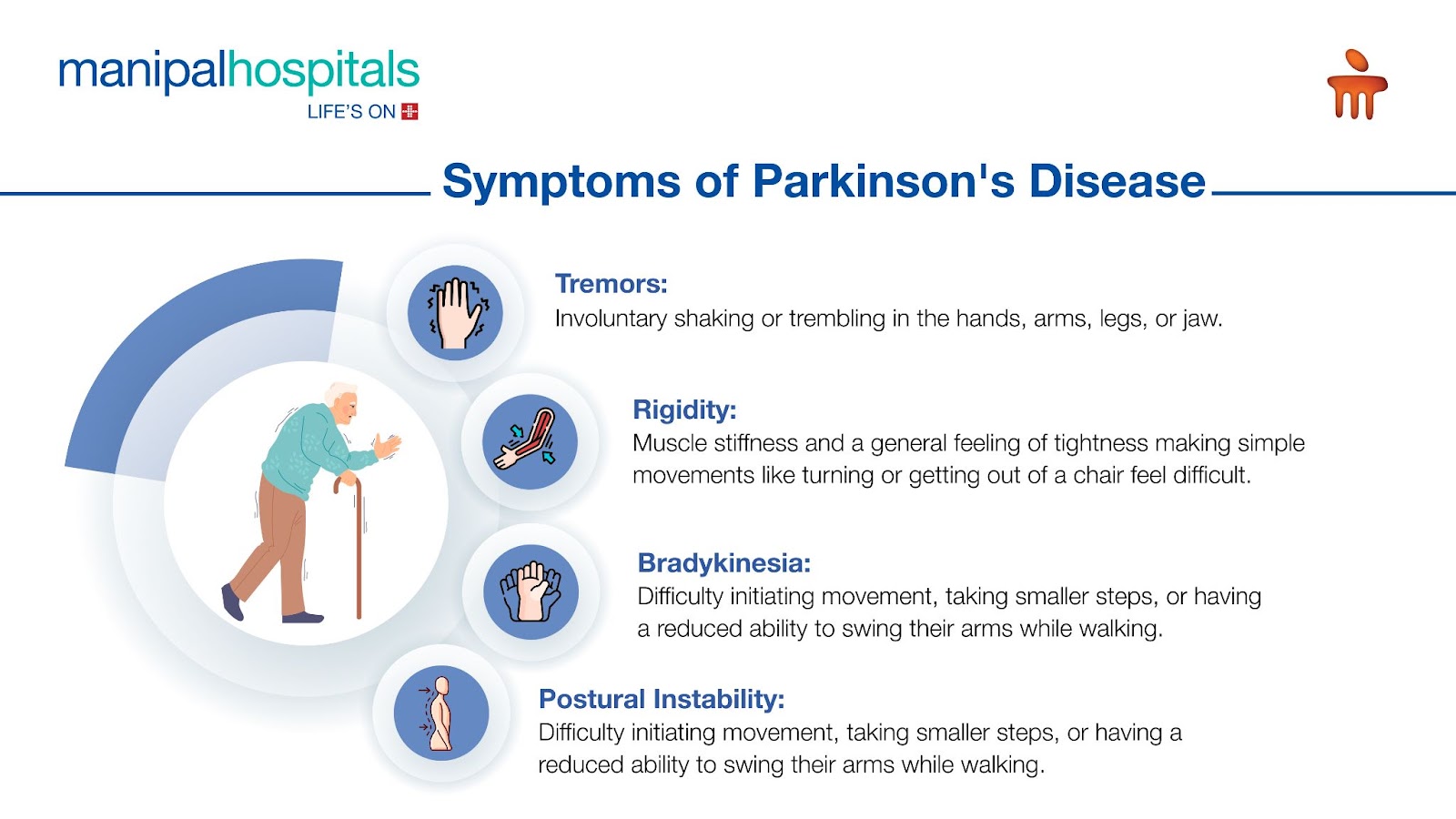
On 11th April every year, the world unites to recognise World Parkinson's Day. This international campaign raises awareness for a progressive neurological condition called Parkinson's disease, affecting millions globally. Did you know that every six minutes, one person is diagnosed with Parkinson's disease? This staggering statistic highlights the seriousness of this disease and the urgent need for more research and support. In this blog post, we'll delve deeper into Parkinson's disease, exploring its symptoms, treatment options, neurophysiotherapy, and how you can be a part of the fight for a cure.
Synopsis
What is Parkinson's Disease?
Parkinson's disease is a chronic and progressive neurodegenerative disorder. This means it affects the nervous system, causing a gradual decline in nerve function over time. The distinctive feature of Parkinson's disease is a disruption in the brain's production of dopamine, a crucial chemical messenger responsible for smooth movement coordination.
Symptoms of Parkinson's Disease

Parkinson's disease can have a combination of movement-related symptoms such as:
-
Tremors: They are often the most recognisable symptom, characterised by involuntary shaking or trembling in the hands, arms, legs, or jaw.
-
Rigidity: Muscle stiffness and a general feeling of tightness are common in Parkinson's disease. This can make simple movements like turning or getting out of a chair feel difficult.
-
Bradykinesia: This refers to slowness of movement. People with Parkinson's disease may experience difficulty initiating movement, taking smaller steps, or having a reduced ability to swing their arms while walking.
-
Postural Instability: Impaired balance and coordination can lead to stooped posture, shuffling gait, and an increased risk of falls.
Treatments for Parkinson's Disease
While there's currently no cure, on World Parkinson's Disease Day, we highlight several treatment options that can help manage symptoms and improve quality of life. Some of the common Parkinson's disease treatment options are:
-
Medication: Levodopa, a medication that converts to dopamine in the brain, is the mainstay of treatment. It can significantly improve symptoms like tremors and rigidity. Other medications may work alongside levodopa or address non-movement symptoms like sleep problems or constipation.
-
Surgery: In some advanced cases, surgery may be considered. Options include Deep Brain Stimulation (DBS), where electrodes are implanted in the brain to regulate abnormal electrical activity and improve movement control. Lesion surgery destroys specific brain cells to reduce tremors, but this approach is less common due to potential side effects.
Dr. Lakshmi Krishna V., Consultant - Neurology, Manipal Hospitals Sarjapur Road, shares important medical details about the nature and progression of Parkinson’s Disease. She details the process that goes behind diagnosing Parkinson’s and talks about the treatment options. Watch the video below to know more:
Living with Parkinson's Disease
Parkinson's disease presents significant challenges for both patients and caregivers. Daily tasks like dressing, eating, and getting around can become increasingly difficult as the disease progresses. Additionally, people with Parkinson's disease may experience non-motor symptoms such as fatigue, sleep disturbances, depression, anxiety, cognitive decline, and bladder problems. These can significantly impact the quality of life. In addition to that, the disease can have an emotional toll on the patients as the progressive nature of the disease can lead to feelings of frustration, isolation, and fear.
Raising Awareness for Parkinson's Disease
World Parkinson’s Disease Day is celebrated to raise awareness of Parkinson's disease and to support the Parkinson's community. The day aims to bring attention to the needs of those living with the disease and to encourage more research into the disease's causes and cure.






















 4 Min Read
4 Min Read













